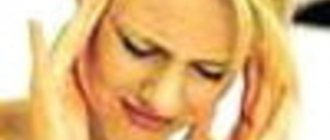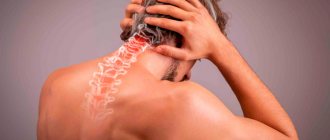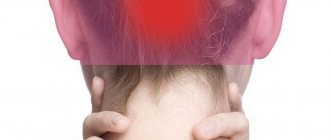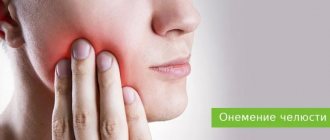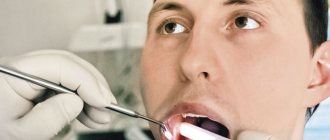Intervertebral hernia is a common pathology associated with the musculoskeletal system. With this disease, protrusion or prolapse of fragments of intervertebral discs into the spinal cavity occurs. The danger of this condition lies in its practically asymptomatic occurrence at an early stage of development. However, if treatment is not started and care is not taken, the disease begins to progress rapidly. You can make an appointment for treatment of a cervical hernia at ArthroMedCenter.
Where does neck pain come from?
The occurrence of painful manifestations in the neck area is most often noted against the background of:
- pathological changes in the spinal column - osteochondrosis, osteoarthrosis, scoliosis, neuralgia, intervertebral hernia;
- injuries associated with vertebrae, discs, joints, ligaments and muscle tissue;
- immune diseases of the ridge;
- infections of the musculoskeletal system;
- neoplasms of benign and malignant nature;
- intracranial hemorrhages, tumors and abscesses;
- physical activity, overwork during training, lifting heavy objects.
Types and causes of discogenic pathology in the cervical spine
Any problems with the integrity of the intervertebral disc with the contents moving beyond its boundaries is considered a disease. Protrusion and hernia form against the background of a critical increase in mechanical pressure on a certain area of the disc. As a result, the nucleus pulposus, located inside, protrudes. The nucleus puts pressure on the annulus fibrosus tissue, which can lead to its rupture.
Doctors distinguish the following stages of the disease:
- A slight protrusion of the disc without damage to the fibrous ring with a displacement of a maximum of 2-3 mm. The clinical picture is mild.
- Development of disc protrusion, which is accompanied by more pronounced protrusion of the pulp up to 3-5 mm. The patient begins to complain of periodic pain. Most often, the ability to work at this stage of the disease is preserved.
- The formation of the hernia itself, which is also called prolapse or extrusion. At this stage, the fibrous ring in the intervertebral disc ruptures with the pulp falling out beyond the boundaries of the disc tissue, for example, into the spinal canal. This is due to the localization of the damaged area.
- At the last stage of pathology formation, the prolapsed fragment of the nucleus pulposus is separated from the disc tissues with possible displacement under pressure. The separated element can move along the spinal canal. This leads to damage to the nervous structure and serious complications in the form of compression of the spinal canal. This condition is called sequestration.
Naturally, as the pathology progresses, each of the listed stages is not always observed. Sequestration develops quite rarely, although the mechanism of formation of the pathology is the same. In any case, the producing factor is increased pressure, leading to the destruction of the discs. This is most often associated with injuries, falling in slippery weather and hitting the head.
The most common cause of herniated intervertebral discs in the cervical spine is an accidental blow to the head in a low doorway. Healthy discs will not erode immediately. This will require prolonged exposure to negative factors or a sharp increase in pressure, for example, when hitting your head. This can cause a severe “explosive” fracture of the spinal elements in the neck, damage to the spinal canal, leading to disability of the patient.
Risk factors for exacerbation
The formation of an exacerbation during protrusion and hernia in the cervical spine is most often observed against the background of:
- Poor posture, stooping, flat feet or walking in uncomfortable shoes. The spinal column has a powerful compensating mechanism that protects the brain from shock during walking and running. However, any uncompensated shock is transmitted upward with amplification. The occurrence of the greatest amplitude and traumatic potential is observed at a considerable distance from the place where the vibration is localized. As a consequence, poor posture, dehydration in the intervertebral discs with possible destruction form in the cervical region.
- Tonic tension in the deep muscles of the dorsal and cervical region, which is accompanied by muscle spasm with the formation of a protective posture. Due to the increased load on the head and neck muscles caused by wearing high hairstyles in women and heavy winter fur hats, blood circulation in the muscle tissue of the cervical region is impaired. As a result, the nutrition of the intervertebral discs deteriorates and their tissues become dehydrated.
- Over time, osteochondrosis develops and progresses, and osteophytes appear on the elements of the spine. This causes poor blood circulation and the development of muscle spasms with limited motor function in the neck.
As a result, a rapid increase in pressure on the spinal tissue leads to its transmission to the intervertebral disc. Against the background of uneven, eccentric and undistributed pressure, a destructive process in the disc begins. This provokes the formation of a protrusion or a hernia itself.
Muscle pain
Spasms of the muscles of the neck and upper back occur due to injuries, physical strain during the day, in particular, incorrect postures, and emotional stress. Also, muscles can spasm due to an uncomfortable pillow. This condition usually manifests itself as pain and limited neck mobility. Within 6 weeks the pain goes away. To speed up the process, it is recommended to do special exercises, as well as eliminate the cause of muscle strain, if possible.
Symptoms of exacerbation of hernia
Uncomplicated cervical hernias are often accompanied by the following symptoms:
- Shooting pain in the upper extremities, similar to an electric shock, increasing with coughing, moving the arms and sneezing, sometimes radiating to the elbow, wrist or fingers. This is due to the infringement of certain nerve endings, their swelling and inflammation.
- Impaired sensitivity in the form of numbness or hypoesthesia, formication or a sensation as if goosebumps are crawling. Such symptoms often appear at a significant distance from the intervertebral disc, for example, in the area of the fingers of the upper extremities.
- Constant aching pain in the cervical region associated with a muscle reaction. This phenomenon is called secondary myofascial syndrome. The pain syndrome sometimes radiates to the back of the head and manifests itself in the form of cephalgic syndrome - persistent pain in the head.
- Secondary symptoms of a hernia in the form of progressive weakness and muscle hypertrophy in the arms and shoulder girdle on the side where the damage is localized. Peripheral or flaccid paralysis (paresis) may develop.
Due to the close proximity of a large neurovascular network, as well as the autonomic nervous structure, the formation of so-called neurovascular symptoms is possible.
Medicines
Home methods of recovery for inflammatory and degenerative diseases of the spine consist of the following steps:
- Inflammation suppression
. To reduce inflammation and swelling, non-steroidal drugs for external use are used: Diclofenac, Voltaren, and indometacium ointment. - Restoring muscle tone
. To relax spasmed muscles, use ointments Vipratox, Viprosal B, Apizartron and other soft agents that are suitable for physiological pinching.
An additional therapeutic effect is provided by compresses with Menovazin and alcohol compresses based on warming herbs.
Medicines for lumbago
If the pain spreads to the tissues adjacent to the cervical region, take oral or intramuscular antispasmodics, painkillers and NSAIDs. The table shows some drugs that can alleviate acute cervicalgia.
| Pharmacological group | Name | Purpose |
| Muscle relaxants | Sirdalud | Reduction of increased muscle tone, analgesic effect |
| Mydocalm | ||
| NSAIDs and NSAIDs (non-steroidal anti-inflammatory drugs) | Ibuprofen | Suppression of inflammation, reduction of swelling, pain relief |
| Xefocam | ||
| Movalis |
Muscle relaxants are taken only if other means are ineffective. Restrictions on the use of these drugs are due to their effect - the medicine can lead to loss of mobility and difficulty breathing.
Physical therapy exercises
Relaxing tight muscles is a key element of home recovery efforts. Relaxation occurs both with a massage, which you can do yourself, and with a series of physical exercises. There are several main types of training:
- turns the head (chin parallel to the shoulder and horizontal to the floor) alternately in both directions;
- tilting the head to the shoulders;
- circular rotations with outstretched arms.
A complex of therapeutic and preventive exercises (PT) increases the elasticity of muscle fibers and promotes decompression of pinched nerve endings.
It is necessary to do physical therapy exercises at a slow pace so as not to increase the pinching.
A set of dynamic and static exercises normalizes increased muscle and vascular tone. Relaxing-mobilizing loads evenly involve all muscle groups of the cervical-shoulder girdle, restoring neural conductivity. Recommended training plan if a nerve is pinched:
- in the stage of intense cervicalgia for 10-15 minutes up to 5 times a day;
- increasing and decreasing load during each exercise (peak intensity in the middle of the procedure);
- repeat the exercise 4-6 times.
After the symptoms have eased, the duration of the warm-up is increased to 40 minutes. Exercise therapy is also performed after improvement, in order to maintain normal tone and mobility of the neck.
Possible complications
Long-term progression of cervical intervertebral hernia can cause the appearance of radicular symptoms, which are accompanied by sensory and motor disorders. It can also cause compression of the spinal canal. As a consequence, compression myelopathy and sometimes tissue necrosis in the spinal cord may develop. This may lead to disability for the patient.
There is information that the development of such a pathology in some cases contributes to compression of the vertebral arterial vessel on the right or left side. This is an auxiliary source in which ischemic stroke can form, especially at a young age.
Often, protrusion and hernia in the acute stage due to sudden movements of the head and neck lead to a significant narrowing of the walls of the vertebral arterial vessel. As a result, an ischemic focus develops in the brain area. The likelihood of the formation of such a condition increases significantly if the patient has a congenital anatomical feature in the structure of the circle of Willis. This is accompanied by its openness and absence of posterior communicating arteries.
With a closed circle of Willis, increased blood flow can be quickly redistributed from the posterior vertebrobasilar bed to the anterior (carotid) or in the opposite direction.
In cases where the posterior communicating arteries are completely absent or are underdeveloped, it will not be possible to quickly redistribute blood flow. This often ends with the transformation of the ischemic focus into a necrotic area, and as a result, the development of a stroke is noted.
Diagnostics
The doctor conducts a visual examination of the patient to identify problems with posture and lack of sensitivity in the area where the nerve is pinched. By palpating the spine, the doctor will identify the level of spasm and soreness in the muscles and the location of the disease. The patient may be required to bend and stand to assess for limited mobility. Next, the reflexes of the knee and Achilles tendons are assessed.
To accurately determine the size and location of an intervertebral hernia in the cervical spine, the doctor prescribes a CT, MRI and radiographic examination in 2 projections.
Therapy methods
Typically, patients diagnosed with cervical intervertebral hernia suffer from the pathology for more than one year, and exacerbations and remissions are regularly observed. Often, painful sensations weaken over time or disappear on their own a couple of weeks after a subsequent exacerbation.
Conservative methods of therapy will not help to completely get rid of the problem; it helps to cope with the consequences of the hernia’s impact on the soft tissue, muscles and nerve endings. Often, as a residual phenomenon, the presence of a vegetative reflex effect on the tone of vascular tissue - neurovascular symptoms - is observed.
Complex therapy involves taking the following pharmaceuticals:
- non-steroidal anti-inflammatory drugs (COX-2 inhibitors);
- muscle relaxants with central action;
- As auxiliary methods, medicinal electrophoresis using vitamins and aminophylline is prescribed.
When the exacerbation subsides, the use of physiotherapeutic procedures is indicated. To activate blood circulation in muscle tissue, it is recommended to perform physical therapy and massage of the cervical-collar region (movements must be extremely careful).
Treatment of cervical intervertebral hernia with relatively crude methods, such as manual therapy, traction, can cause a significant aggravation of the condition. This will lead to the development of serious negative consequences.
As an emergency measure, it is recommended to wear a Shants collar if pain occurs. The device is used to support the head and helps prevent sudden bending and turning of the head, which can lead to the development of compression symptoms and sometimes fainting.
After the collar is applied, it is better to immediately consult a neurologist and have an MRI of the neck performed; then you may need to consult with a neurosurgeon. This will help to assess the possible risk for a similar location of the pathology and determine the choice of treatment regimen.
Treatment
Help before diagnosis
The appearance of neck pain on the right or left can be a sign of various pathological conditions, so the patient needs to consult a specialist. Until an accurate diagnosis is established, the patient must maintain physiological rest for the neck, avoid heavy physical exertion and prolonged work at the computer. In case of severe pain, taking painkillers and NSAIDs is allowed. The use of physiotherapeutic methods of treatment and warm compresses until the cause of the disease is determined is prohibited.
The Shants collar fixes the neck and eliminates pain
Conservative therapy
Medical tactics for neck pain depend on the cause of the disorder. If cervicalgia is short-lived, caused by sudden turns of the head, uncomfortable position of the neck during sleep or work, you can limit yourself to physical therapy. To relieve muscle spasm, it is recommended to wear a Shants collar for 2 weeks. After excluding the tumor cause of pain, thermal procedures and compresses are prescribed. For chronic pain, reflexology and exercise therapy are used. The following medications are used as etiotropic and pathogenetic therapy:
- Analgesics
. The drugs are indicated for all types of severe neck pain that causes discomfort and impairs performance. NSAIDs, in addition to analgesic, have an anti-inflammatory effect. - Antibacterial agents
. Purulent processes in the retropharyngeal space serve as the basis for the initiation of massive antibacterial therapy. Antibiotics are selected taking into account the sensitivity of pathogenic microorganisms. The course usually lasts at least 14 days. - Local remedies
. Blockades with injection of anesthetics are recommended for unbearable pain that cannot be treated with NSAIDs. Compresses with topical corticosteroids and anti-inflammatory drugs diluted with dimexide can also be applied. - Chondroprotectors
. For osteochondrosis, preparations of hyaluronic acid and chondroitin sulfate are indicated to slow down degenerative processes in the cartilage tissue of the vertebrae. The products improve the nutrition of cartilage and promote rapid regeneration. - Cytostatics
. To treat the oncological cause of neck pain, drugs from the group of antimetabolites and alkylating compounds are used. If necessary, chemotherapeutic agents are combined with radiation therapy.
Surgery
In severe cases of osteochondrosis, it is necessary to carry out surgical interventions aimed at decompressing the spinal canal. Discectomy, laminectomy and foraminotomy are used. If the disease is complicated by an intervertebral hernia, surgical removal is necessary. For retropharyngeal abscesses, surgical opening of the abscess is performed and subsequent rinsing of the cavity with antibiotic solutions. To correct torticollis, dissection of the fibers of the damaged muscle and excision of keloid scars on the skin are used.
MBST therapy
This modern technique is used for joint pathologies to restore cartilage tissue and discs. The treatment mechanism is based on high-pulse magnetic resonance at the cellular level.
The procedure promotes:
- increasing the volume of cartilage tissue due to cell restoration;
- increased cartilage density due to increased collagen levels;
- relieving pain.
You can treat a hernia of the cervical spine in Moscow at ArthroMedCenter. MBST therapy will help eliminate pain and spasm, as well as the underlying causes of the disease.
Symptoms for spinal pathologies
Neck pinching is often a concomitant symptom of spinal diseases. Constant pain and limited mobility occur with degenerative-dystrophic and inflammatory-articular pathologies localized in the cervical-brachial region. Factors that provoke cervicalgia are:
- osteochondrosis;
- osteoarthritis;
- uncovertebral arthrosis;
- spondyloarthrosis;
- radicular syndrome.
Advertising:
Cervical lumbago occurs as a result of compression of nerve endings. If you get a severe headache when muscles are pinched, then compression of the nerve is a consequence of swelling of inflamed tissues or tight contact of deformed joint-connective tissues. Such pinching is characterized by increased pain when turning the head sharply, coughing or laughing.
Prevention
To prevent the formation of a cervical hernia in patients at risk, you should adhere to these simple rules:
- Avoid forced, uncomfortable head positions.
- If possible, do neck exercises frequently, especially if your job involves spending a lot of time at the computer.
- Walk and sit straight, do not slouch.
- For rest, use a hard mattress and a small, medium-firm pillow.
- Do not overload the spinal region, regardless of which area the load falls on.
A cervical hernia is a rather dangerous disease; it is difficult to treat. You can count on a positive result using only conservative treatment methods only if the patient promptly seeks help from a specialist. In addition, it should be taken into account that for a cervical hernia larger than 6 mm, surgical intervention is required.
What will prevent cervicalgia
Simple rules for preventing a situation where the head cannot turn and the neck hurts are as follows:
- if you work at a computer, place the monitor so that its center is located slightly below eye level, and your body and head are in the same plane when working (so that you don’t have to constantly turn or tilt your head);
- the mouse should be positioned so that you don’t have to reach for it or strain your hand while working;
- You should not carry a load on one shoulder, even if it seems insignificant: in order to prevent the belt from slipping, a person reflexively raises the shoulder with the bag, overstraining the muscles in an anatomically incorrect position;
- after physical activity, when the muscles are warm, avoid drafts;
- choose a mattress and pillows so that your neck is in the anatomically correct position during sleep;
- Do warm-up exercises for your neck and back during the workday.
These measures will prevent one-sided, anatomically incorrect load on the cervical spine, which impairs blood circulation. The quality of sleep will improve, fatigue will decrease, and performance will increase. If, despite all the efforts made, your neck periodically hurts and turning it hurts , only a doctor will tell you what to do .

